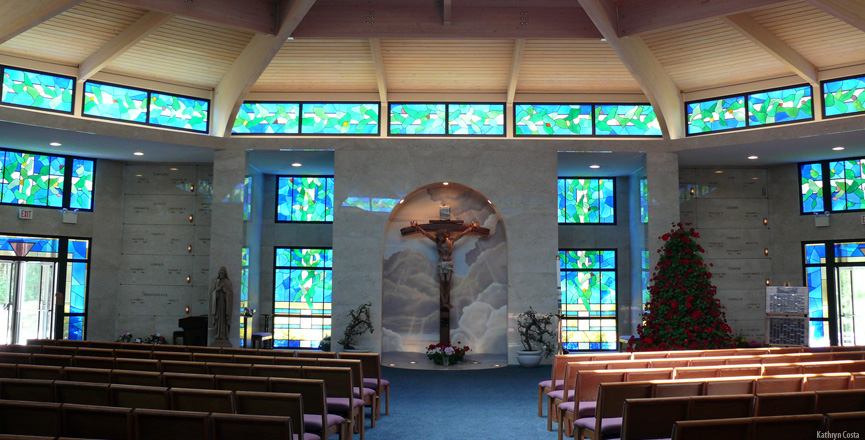
Home » Parishes » Parish Life » Catholic Cemeteries » Catholic Funeral Rites
Catholic Funeral Rites
Vigil
The Vigil for the deceased, commonly known as the Wake, is the principal rite celebrated by the Christian community at the time following death and before the funeral liturgy and the rite of committal. The Vigil may take place in either the parish church or in a funeral home. It may also take place in the home. The purpose of celebrating the Vigil is as follows:
To offer the members of the bereaved family the consolation and strength of the community’s presence and prayer at their time of loss.
To be the first occasion among the funeral rites for the solemn reading and reflection on the Word of God.
To provide an opportunity for family and friends to recall the memory of their loved one.
The Vigil takes the form of the liturgy of the word. The structure of the Vigil Service is as follows:
Introductory Rites
Liturgy of the Word – Including a brief homily or reflection by a priest or deacon
Intercessions
Eulogy – A family member or friend may present a few meaningful thoughts on the life of the deceased
Concluding Rite
Pastoral sensitivity and prudence will determine appropriate modifications based on particular needs and special circumstances. Cultural practices and popular devotions (e.g., the Rosary) may precede or follow the Vigil Service but should not replace it.
Funeral Mass
The Funeral Mass is the central liturgical celebration for the deceased. The Funeral is to be celebrated in a Catholic Church or a canonically approved chapel and not in a funeral home or other gathering space. The Funeral Liturgy within Mass is not celebrated on Sundays, Solemnities and Holy Days of Obligation, or during the days of the Easter Triduum.
Family members are encouraged to participate in the liturgy. Members of pastoral staffs and/or bereavement ministry will explain the various rites and opportunities for their participation. Families may be invited to place the pall on the casket, to place Christian symbols on the casket (crucifix, bible), to present the bread and wine at the preparation rite and to join the music ministry in song.
A bishop, priest or deacon gives the homily. A family member or friend may share one brief eulogy not more than five minutes after the Communion Rite. Music at the funeral liturgy should reflect and affirm hope, trust and confidence in the Paschal Mystery.
The final commendation takes place after the Prayer following communion and after the celebrant has reverenced the altar. At the time of commendation, the song of farewell is sung and the body is incensed. The invitation to proceed to the place of internment precedes the recessional and closing hymn. At the doors of the church, the pall and other Christian symbols are removed from the casket and the flag or other national symbol may be placed on it. (Please note that when cremated remains are present, they are neither covered by a pall during the introductory rites nor are they reverenced with incense during the Rite of Final Commendation.)
Committal
Funeral rites conclude with the rite of committal. Through the committal of the body to its place of rest, the Church expresses the hope that the deceased will experience the glory of resurrection.
The Rite of Committal takes place as soon as possible after the funeral Mass. It is usually celebrated at the grave or place of internment, but may also be celebrated at a mausoleum or cemetery chapel.
The structure of the Rite of Committal is as follows:
Invitation to prayer
Scripture verse
Prayer or Blessing over the place of committal
Committal
Intercessions
Our Father
Final Blessing
